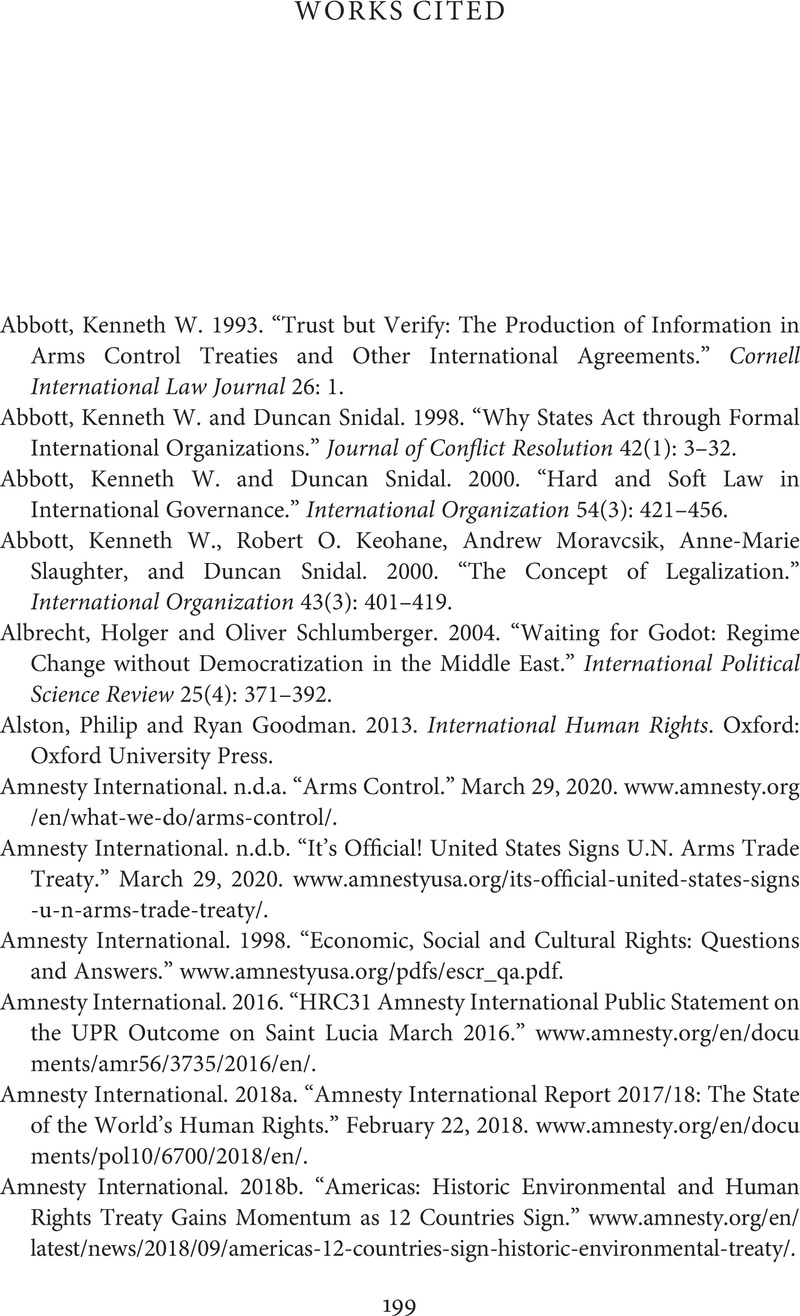Book contents
- Committed to Rights
- Committed to Rights
- Copyright page
- Contents
- Figures and Tables
- Acknowledgments
- Abbreviations
- 1 Introduction
- 2 On Ratification
- 3 Legal Paths for Human Rights Treaty Commitment and Compliance
- 4 Signature
- 5 Accession
- 6 Succession
- 7 Conclusion
- Appendix Variables in Statistical Analyses
- Works Cited
- Index
- References
Works Cited
Published online by Cambridge University Press: 14 January 2021
- Committed to Rights
- Committed to Rights
- Copyright page
- Contents
- Figures and Tables
- Acknowledgments
- Abbreviations
- 1 Introduction
- 2 On Ratification
- 3 Legal Paths for Human Rights Treaty Commitment and Compliance
- 4 Signature
- 5 Accession
- 6 Succession
- 7 Conclusion
- Appendix Variables in Statistical Analyses
- Works Cited
- Index
- References
Summary

- Type
- Chapter
- Information
- Committed to RightsUN Human Rights Treaties and Legal Paths for Commitment and Compliance, pp. 199 - 217Publisher: Cambridge University PressPrint publication year: 2021

